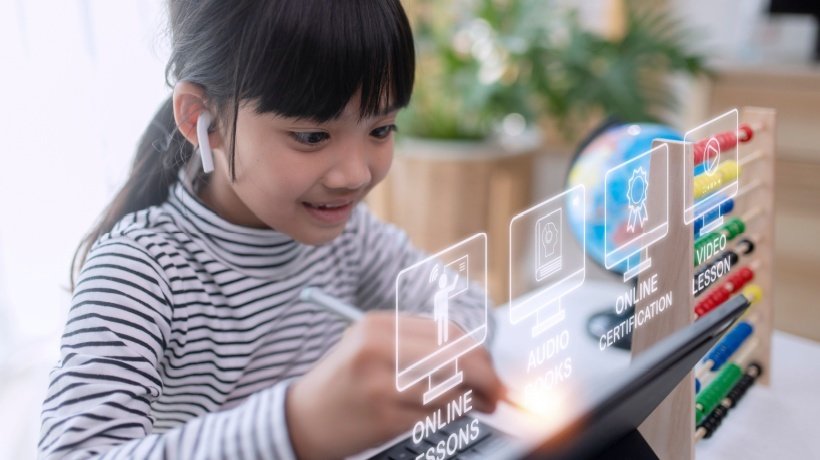Exploring Essential EdTech Tools That Change The eLearning Experience
At the heart of the so-called educational revolution are technological tools that take learning a step further. We're talking about EdTech tools that are popular nowadays due to their transformative power. In decades past, no one could imagine that people could attend classes from the comfort of their homes, but thanks to EdTech tools, it is now possible. Their capabilities are numerous, including breaking geographical barriers, connecting people from different time zones, and democratizing education. Below, we will examine 5 of the most essential EdTech tools that positively impact learner experience in eLearning and the future of the industry.
5 EdTech Tools You Need To Know About
Digital Learning Platforms
Digital learning platforms can be described as virtual hubs where students and educators gather to exchange ideas, lessons, and solutions together. They're not just ordinary websites but dynamic spaces designed to make learning as engaging as possible. These platforms come in various types to better adapt to learners' needs. One example is Learning Management Systems (LMSs), where instructors can create, manage, and deliver courses. Another is collaborative platforms that simulate a virtual study session, where learners can engage in group projects and discussions. One of the most crucial features of these platforms is communication. You'll find live chat, forums, and video conferencing features to enhance your online learning experience. In addition, they are designed to be user-friendly, so you won't feel overwhelmed trying to access your lessons.
Interactive Learning Apps
Students often feel like their textbooks or other resources could be a little more fun. This is where interactive learning apps come in handy, as they use the power of technology to turn a potentially dull lesson into an attention-grabbing experience. From math apps that turn your homework into a fun puzzle to language apps that take you on a different virtual journey with every new language you study, these tools can actually transform learning for students. No matter what your favorite subject is—science, English, or history—there's always a learning app for you. As far as features are concerned, apart from usability, these apps are really flexible and adaptable, too. They monitor your progress and provide instant feedback while letting you learn at your own pace.
Lesson Planning Tools
Educators used to dread planning lessons due to all the textbooks, papers, and schedules they had to keep in mind. However, lesson planning tools are changing the landscape by saving teachers time and making the process much easier. But how do they work? First, you decide on the subject you want to teach. The tool will recommend pre-made, customizable templates to help you implement your ideas. It's basically like a canvas, where you can easily add pictures, videos, and other multimedia elements, create presentations, and add activities and assessments. You can decide when you want each lesson to launch, define the audience, and keep everything organized through your dashboard. A good lesson planning platform will allow you to automate most of the process, making it a valuable addition to your stack of essential EdTech tools.
Social Learning
They say "two heads are better than one," and social learning as an EdTech tool aims to prove this. The idea is to tap into the collective intelligence of a group of learners and encourage everyone to participate and share their ideas with their peers. This way, everyone benefits from each other's strengths and is an active contributor to the success of their learning journey. You can achieve that through discussion forums, where learners can ask and answer questions, social media platforms for sharing resources, insights, and communicating with teachers and students, and collaborative document editing platforms so that multiple people can work on the same project. Social learning tools make real-time collaboration possible, even for dispersed teams, and keep faculty and students connected almost organically without making it seem obligatory.
Learning Content
Learning content is every resource, piece of information, and activity that is part of a course and aims to equip you with knowledge. The more interesting the content is, the more motivated learners will be, and that's what instructors strive for. Learning content platforms are like libraries full of different types of learning materials, letting you browse and choose what you want to incorporate into your lessons. You can find eBooks, podcasts, presentations, videos, images, and even games that you can use to make the learning experience more fun and meaningful. A factor you should look out for when choosing a platform like this is navigation. Since they can host millions of pieces of content, you want an intuitive design or, simply put, finding everything where you imagine it would be.
Future Trends In EdTech
Immersive Learning
Have you ever thought that you could learn about an ancient civilization in history class and be able to step right into it and experience it firsthand? This is actually possible through Virtual Reality (VR), which is a popular trend in EdTech. Students can benefit from this in various subjects, like science, physics, biology, and many more, and have the chance to practice everything they learn in a safe environment.
Personalized Learning Paths
Adaptive learning platforms have started to become the norm and seem to be here to stay. These provide personalized learning paths for each learner by analyzing their performance and progress. Each student is shown content that adapts to their stats and pace, so no one is left behind, whether they need more time to understand a concept or are fast learners.
Artificial Intelligence
What if every student had a virtual assistant that could provide targeted help and meaningful tips? This is the magic of AI in EdTech, and it seems to be widely used to offer personalized tutoring. Your AI pal can answer questions, offer feedback by analyzing your progress, and even refer you to relevant resources from your platform's library.
Conclusion
EdTech tools may be an integral part of the revolution in education, involving the shift to virtual classrooms and relying on technology to get things done. However, the true essence of this change is continuous improvement. EdTech is a dynamic field, always bringing innovative solutions to everyday problems in the industry and always aiming to make the learning experience positively unforgettable for educators and learners. So, whether you share or receive knowledge, the above essential EdTech tools are there to take you a step further into a brighter future.









